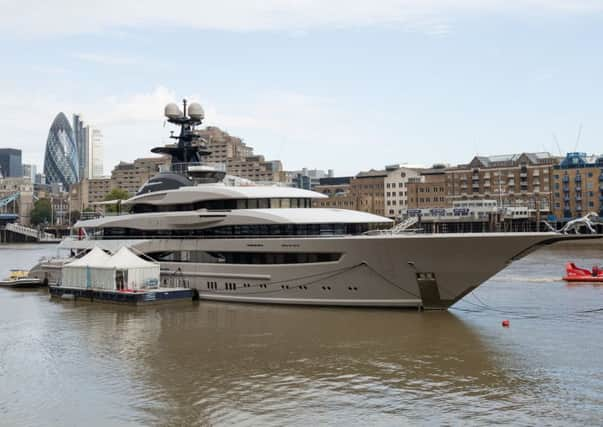Leader: Consumer spending surge on the never never


Even before the final pre-Christmas spending surge, retail sales surged six per cent in the most recent set of figures, with the previous month showing the fastest rate of growth in 14 years.
Now comes survey evidence showing that the spending surge continued in the final frenetic run-up to Christmas, recording its fastest growth for two years.
Advertisement
Hide AdAdvertisement
Hide AdAccording to the VISA UK Consumer Spending Index which accounts for £1 in every £3 of all UK spending, December saw a 2.6 per cent rise, with online spending climbing by 5.5 per cent annually.
Not all companies fared well, as clothes retailer next warned last week. But the overall gain is unarguable. And this matters for two reasons. First, household expenditure accounts for about 60 per cent of the UK economy and any slowdown here would quickly radiate across other sectors. And second, retail spending is a closely watched gauge of consumer confidence. This is especially sensitive at this time given the uncertainties over Brexit and fears that the fall in sterling since the referendum vote will work through in time to higher prices for imported food products and raw materials.
But how do the figures of buoyant consumer spending square with sluggish growth in earnings and the plight of the JAMS – the Just About Managing? For the uber-wealthy, there is little sign of horns being drawn in: Britain’s superyacht industry has posted its highest sales figures since the 2008-09 financial crisis, with industry watchers saying that momentum has not been torpedoed by Brexit jitters.
Super yacht work may be benefitting from the falling pound. But for millions juggling a household budget, there is little such evident benefit. The biggest concern is the rise in input costs for retailers who now have to pay more for imported goods and raw materials. As many global commodity prices – and notably oil - are priced in dollars and the pound has lost some 17 per cent against the dollar since June, retailers must either take the hit on their profits once currency hedging arrangements fall away or pass on the higher prices to consumers.
The squeeze will be most keenly felt by poorer households where some 16 per cent of incomes go on food compared with an average of 11 per cent across the UK. Add to this falling real wage growth and it is not hard to see why retailers are so apprehensive about 2017.
For the moment retail sales are benefitting from intense competition in the high street with a continuing fall in shop prices year-on-year – albeit at a progressively slower pace – and higher resort to borrowing. Consumer credit jumped by more than 10 per cent in November compared with the same month of 2015. The average household in the UK now owes a record amount of £12,887, not including mortgages. With interest rates set to rise over the next twelve months, that does not look a sustainable basis for growth of any sort.